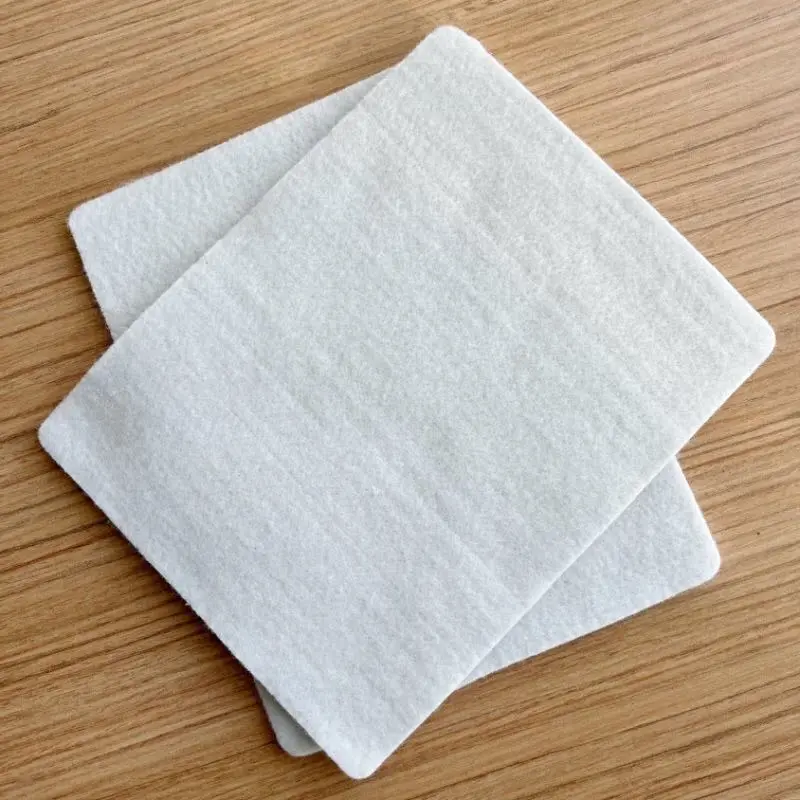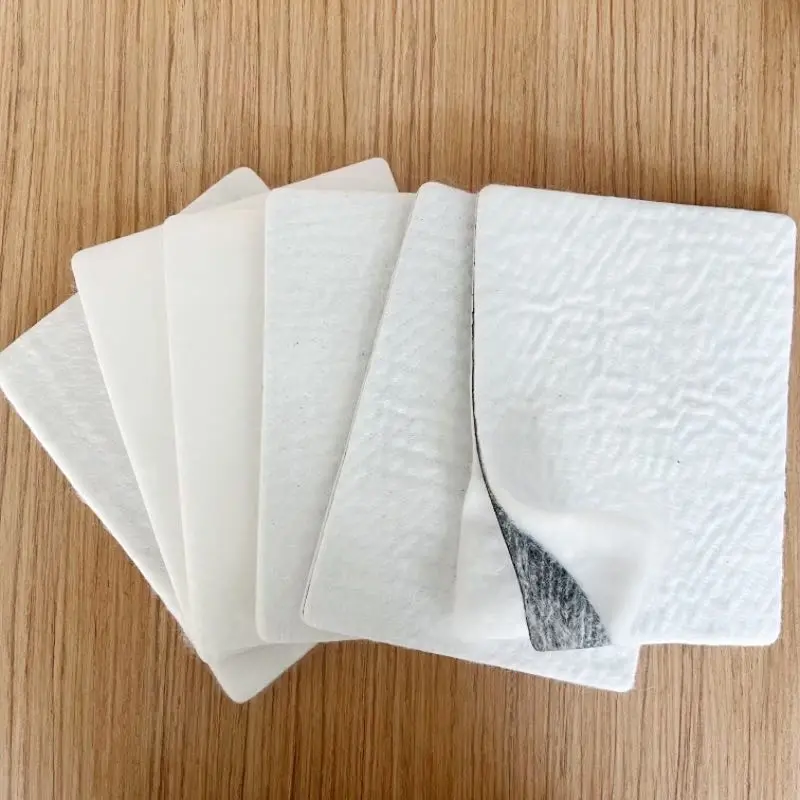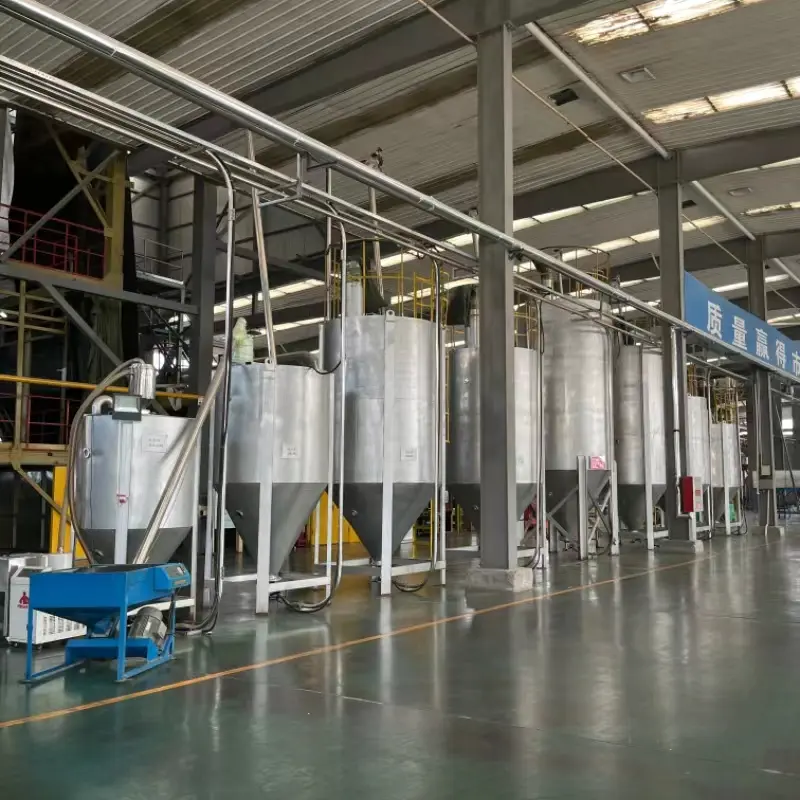What is composite geomembrane

Composite geomembrane, also known as waterproof geotextile, is composed of a plastic film made of high-molecular materials such as polyethylene, and a non-woven fabric. The plastic film primarily serves the function of preventing seepage, and it exhibits outstanding tensile strength and elongation. When combined with the non-woven fabric, the composite further enhances its tensile strength and puncture resistance. It also increases the friction on the contact surface, providing greater stability. Additionally, both materials demonstrate strong resistance to corrosion, protecting against erosion and damage from various chemicals and bacteria.
Specifications we supply
One fabric/one membrane | fabric:100—1000 g/m² | membrane thickness:0.1—1.5mm |
two fabric/one membrane | fabric:80—600 g/m² | membrane thickness:0.2—1.5mm |
one fabric/two membrane | fabric:100—1000 g/m² | membrane thickness:0.1—0.8mm |
mutiple fabric/mutiple membrane | fabric:100—1000 g/m² | membrane thickness:0.1—0.8mm |
Application Areas:

composite geosynthetic membranes are highly important construction materials with diverse applications. They play crucial roles in environmental protection, water conservancy projects, mining tailings reservoirs, road construction, and aquaculture. Therefore, their widespread application across various industries is essential and beneficial, constituting a highly necessary and advantageous technology.
1, Environmental Protection: Composite geosynthetic membranes can be used in projects such as sewage treatment plants and landfill sites as crucial impermeable materials. Preventing wastewater and garbage from permeating into groundwater is essential for environmental protection in these projects.
2, Water Conservancy Projects: In water conservancy projects, composite geosynthetic membranes are utilized for impermeable reinforcement in dams, reservoirs, and river channels. Their excellent waterproofing properties and load-bearing capacity make them widely applied in these projects.
3, Mining Tailings Reservoirs: Composite geosynthetic membranes are commonly used for impermeable protection in tailings reservoirs to prevent safety accidents. Additionally, they can reinforce mining pit facings to prevent water and mud from seeping onto the ground.
4, Road Construction: In projects such as highways, railways, airports, and tunnels, composite geosynthetic membranes are employed to strengthen the foundations of structures like roads, railways, and airports, enhancing their durability.
5, Aquaculture: Composite geosynthetic membranes can also be used for aquaculture. Due to their safety, efficiency, and ease of use, they are widely utilized in agricultural irrigation and find application in aquaculture.
6, During actual usage, composite geosynthetic membranes may encounter common issues such as wrinkling and insecure overlaps. These issues require special attention and resolution to ensure the integrity and effectiveness of the membranes.
Use of Composite Membranes in Road Construction

Composite geomemrbrane are widely used in road constructions, it provide many functions:
1, Reinforcement Function:
Composite geosynthetic membranes possess high tensile strength. When buried within the soil or incorporated into the pavement with appropriate structural design adjustments, they primarily distribute stress, transmit tensile stress, and limit lateral displacement. This enhances the interlocking frictional resistance between the soil or pavement structural layers and the geosynthetic material, continuously increasing the strength of the composite structure. Consequently, they effectively restrain the deformation of soil or pavement structural layers and suppress or reduce uneven settlement, thus reinforcing the stability of the soil or pavement structural layers.
2, Isolation Function:
Placing composite geosynthetic membranes between materials with different characteristics, varying particle sizes within the same material, or between the surface of the soil and the overlying construction structures isolates them. Even when subjected to external environmental loads, such materials experience mutual compression, but the presence of composite geosynthetic membranes prevents them from intermixing or loss. This maintains the overall structural integrity and functionality of the roadbed materials, widely applied in Chinese railway, highway subgrades, earth-rock dam projects, and soft soil foundation treatment.
3, Protection Function:
Composite geosynthetic membranes can disperse stress, decomposing stress when external forces are transferred from one object to another, thus preventing the external forces from damaging the soil and providing protection to the pavement materials. The protective function of composite geosynthetic membranes primarily involves internal contact surface protection, wherein, when one material experiences concentrated stress, placing the membrane between two materials protects the latter without damaging the former.
4, Waterproofing:
Composite geosynthetic membranes can be used as waterproof layers for roadbeds and embankments, preventing water infiltration into the roadbed, reducing softening and deformation, and enhancing the stability and durability of roads.
5, Corrosion Prevention:
Composite geosynthetic membranes can be applied as corrosion-resistant layers for structures such as road bridges, culverts, and tunnels, preventing water and chemicals from corroding structural materials and extending their service life.
6, Settlement Prevention:
In road engineering in soft soil areas, composite geosynthetic membranes increase the roadbed's resistance to settlement, reducing pavement settlement and deformation, and maintaining road smoothness and comfort.
In conclusion, the application of composite geosynthetic membranes in road engineering can enhance the stability, durability, and load-bearing capacity of roads, reduce the frequency and cost of maintenance and reconstruction, and prolong the service life of roads.
FAQ
1: What are the primary functions of composite geomembranes in road construction?
Composite geomembranes primarily serve to reinforce, isolate, protect against water infiltration, prevent corrosion, and mitigate settlement in road construction projects.
2: How does the use of composite geomembranes enhance road stability?
By distributing stress, transmitting tensile forces, and limiting lateral displacement, composite geomembranes reinforce the structural integrity of road layers, thereby enhancing stability.
3: Can composite geomembranes prevent water damage to roadbeds?
Yes, composite geomembranes act as impermeable barriers, preventing water from infiltrating roadbeds and reducing the risk of softening, deformation, and structural damage.
4: In what scenarios are composite geomembranes particularly beneficial for road construction?
Composite geomembranes are especially beneficial in soft soil areas, where they help mitigate settlement, maintain road smoothness, and increase the resistance of roadbeds to deformation.
5: How do composite geomembranes contribute to cost savings in road construction projects?
By reducing the frequency of maintenance, minimizing the need for reconstruction, and prolonging the lifespan of roads, the use of composite geomembranes can lead to significant cost savings over time.
IF you are interested in our products, please fell free to contact me:
Echo: 0086-18853127527 phone/wechat/whatsapp
email: export@hygeosynthetics.com


780.webp)



503.webp)
759.webp)
992.webp)
855.webp)